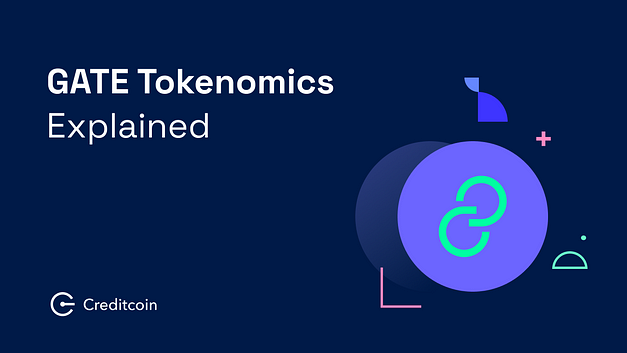GATE Tokenomics Explained
GATE tokenomics are pretty simple. This quick guide explains everything you need to know.

GATE tokenomics are pretty simple. This quick guide explains everything you need to know.
GATE tokenomics are pretty straightforward. We designed it to be easy to understand, with a clear and simple incentive structure — the earlier you get in, the more rewards you earn. But first, a little context…
To earn GATE, you need to start staking your GTD, the native governance token of the Gateway DAO. GTD is used to approve transactions, vote on governance decisions, and of course, earn GATE rewards for doing so. GTD can be acquired and staked by wrapping your CTC in the Gluwa app.
Want to start staking your CTC and earning GATE in the Gluwa app? We made a simple guide for you to follow here.
And you’ll need to download the Gluwa app too: 🍏 Apple | 🤖 Android
Back to the topic at hand, there are two fundamental things to understand about GATE’s tokenomics. How are rewards distributed to GTD stakers? And what does the reward issuance schedule look like? We’ll cover both questions below.
How are GATE rewards distributed?
After staking your GTD and completing the ‘warm-up’ period (this takes ~1 day) you’ll start earning $GATE rewards automatically — you don’t need to lift a finger. GATE rewards are passively issued to all stakers according to their relative portion of the total staked GTD pool. That means if you own 10% of the total staked GTD supply, you’ll earn 10% of the total GATE rewards issued by the protocol, too. When you eventually decide to claim your GATE from the contract, you’ll have to pay an ETH gas fee to do so.
Of course, this only covers passive minting. In future, GATE will also be earned by performing specific governance actions such as voting on transaction requests and governance proposals.
What is the GATE issuance schedule?
The GATE issuance schedule is modeled on Bitcoin. This means that total supply is capped at 21,000,000, with a ‘halving’ in rewards issued taking place every 2.1M ETH blocks (roughly 1 year). This also means that the earlier you start staking, the more GATE you’ll earn!
As Gateway DAO is built on Ethereum, it follows Ethereum’s block time when issuing rewards. To be exact, the Gatekeeper DAO contract mints 5 GATE per Ethereum block, shared proportionally amongst all GTD stakers.

That’s literally all there is to know really. We hope you found this quick guide helpful.
Website|Twitter|Discord|Medium|Youtube|Telegram(ANN)|Telegram(Community)|Whitepaper(ENG)
About $GTD
Gateway DAO Tokens (GTD) are the native governance tokens of the Gateway DAO, allowing holders to participate in Gateway DAO governance and cross-chain validation, as well as receive GATE rewards.
About $GATE
Gate Tokens are the native utility token of the Gateway DAO ecosystem, used to incentivise voting on bridge transfers and governance proposals. When users transfer assets using a Gateway, or submit governance applications, they must pay GATE to do so.
About Creditcoin
Creditcoin is a foundational L1 blockchain designed to match and record credit transactions, creating a public ledger of credit history and loan performance and paving the way for a new generation of interoperable cross-chain credit markets.

